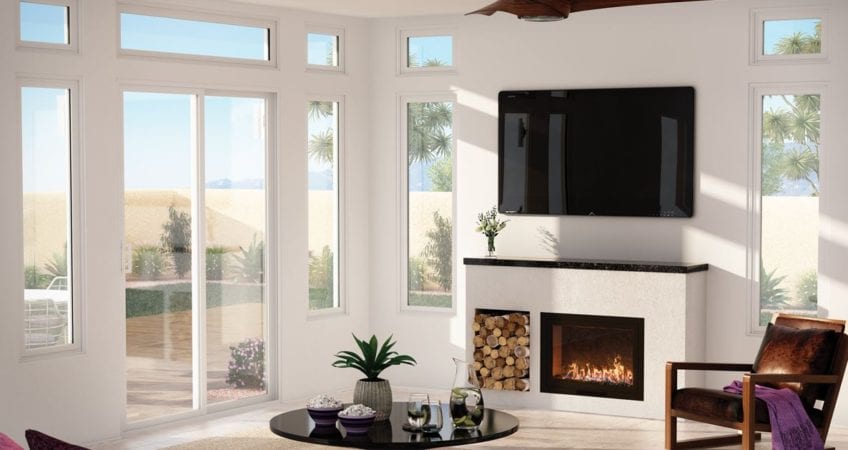Natural light is an asset in most homes. And to get more natural light, homeowners need to use more glass. Unfortunately, ordinary glass is a highly thermal emissive material. It does very little to reflect or block heat transfer. And more glass would generally mean less efficiency. But with Low-E glazing on replacement windows in Portland, OR that doesn’t have to be the case. Here is what homeowners need to know about Low-E glass.
What is Low-E Technology?
Low-emissivity or Low-E technology isn’t new. It has been around since the mid-70s. When it was originally invented, the Low-E coating was meant for cooler climates because it retained radiant heat inside. Then, about 20 years ago, manufacturers figured out that Low-E glass could also reflect radiant heat back out during the warmer months. Today every major window manufacturer offers Low-E glazing on replacement windows. And now spectrally selective glazing can help minimize the amount of ultraviolet and infrared light coming through the glass without reducing the amount of visible light entering the home.
A Low-E coating is a microscopically thin layer of metallic oxide applied to the raw glass. Solar control Low-E coatings, or soft-coats, are applied to the glass in a vacuum. These have superior solar performance, but are delicate and needs to be sealed on the inside of an IGU. The soft-coats are good for cold to hot climates. Passive Low-E coatings, or hard-coats, use a pyrolytic process to fuse the coating to the surface of the glass. The coating is more durable and can work on exterior surfaces, but does not have the same level of performance as a soft-coat. These are best for extremely cold climates because they help heat and insulate the home in winter.
Manufacturers can apply Low-E coatings in different areas, but the most common is between the two panes of a double-glazed window. This basically turns it into a triple-pane window that improves energy efficiency year-round. It helps reflect unwanted heat back outside in the warmer months while also helping insulate against heat losses in the cooler months.
Benefits of Low-E Glazing
As previously mentioned, the main purpose of Low-E glass is to boost energy efficiency and reduce heating and cooling costs. But another advantage is UV protection. Low-E windows are spectrally selective and block certain wavelengths of light. By blocking UV rays these windows can help protect carpets, floors, and furnishings from sun damage. It can also help keep the interior surface of the windows warmer which reduces condensation in the winter.
Looking to invest in replacement windows in Portland, OR? For the most energy efficient windows, you will want to consider Low-E glazing technology. By working with a window professional you can decide on the right window style, size, design and Low-E glazing that best suits your home. For more help finding the right products contact EnergyGuard Windows & Doors. You can call us at (503) 554-5500 or stop by 516 E. 2nd St., Newberg, OR 97132.

